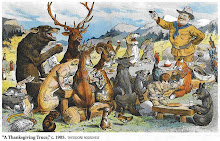New study finds US and Canada have lost more than 1 in 4 birds in the past 50 years
The study notes that birds are indicators of environmental health, signaling that natural systems across the U.S. and Canada are now being so severely impacted by human activities that they no longer support the same robust wildlife populations.
The findings showed that of nearly 3 billion birds lost, 90 percent belong to 12 bird families, including sparrows, warblers, finches, and swallows—common, widespread species that play influential roles in food webs and ecosystem functioning, from seed dispersal to pest control.
Among the steep declines noted:
- Grassland birds are especially hard hit, with a 53 percent reduction in population—more than 720 million birds—since 1970.
- Shorebirds, most of which frequent sensitive coastal habitats, were already at dangerously low numbers and have lost more than one-third of their population.
- The volume of spring migration, measured by radar in the night skies, has dropped by 14 percent in just the past decade.
- the largest factor driving these declines is likely the widespread loss and degradation of habitat, especially due to agricultural intensification and urbanization.
- Other studies have documented mortality from predation by free-roaming domestic cats; collisions with glass, buildings, and other structures; and pervasive use of pesticides associated with widespread declines in insects, an essential food source for birds. Climate change is expected to compound these challenges by altering habitats and threatening plant communities that birds need to survive. More research is needed to pinpoint primary causes for declines in individual species.
- The study also documents a few promising rebounds resulting from galvanized human efforts. Waterfowl (ducks, geese, and swans) have made a remarkable recovery over the past 50 years, made possible by investments in conservation by hunters and billions of dollars of government funding for wetland protection and restoration. Raptors such as the Bald Eagle have also made spectacular comebacks since the 1970s, after the harmful pesticide DDT was banned and recovery efforts through endangered species legislation in the U.S. and Canada provided critical protection."It's a wake-up call that we've lost more than a quarter of our birds in the U.S. and Canada," said coauthor Adam Smith from Environment and Climate Change Canada. "But the crisis reaches far beyond our individual borders. Many of the birds that breed in Canadian backyards migrate through or spend the winter in the U.S. and places farther south—from Mexico and the Caribbean to Central and South America. What our birds need now is an historic, hemispheric effort that unites people and organizations with one common goal: bringing our birds back."
- More information: K.V. Rosenberg el al., "Decline of the North American avifauna," Science (2019). science.sciencemag.org/lookup/ … 1126/science.aaw1313Journal information: Science













No comments:
Post a Comment